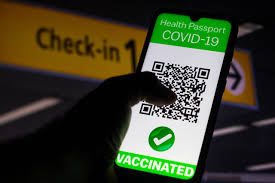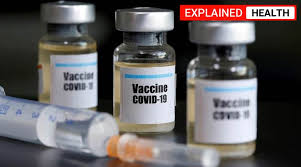FDA admits cancerous cells and unknown viruses in vaccines
 General Overview
General Overview
The emergence of pathogenic virus infections like influenza and HIV have created an urgent need for new vaccines.
Virus-based vaccines are made in living cells (cell substrates). Some manufacturers are investigating the use of new cell lines to make vaccines. The continual growth of cell lines ensures that there is a consistent supply of the same cells that can yield high quantities of the vaccine.
In some cases the cell lines that are used might be tumorigenic, that is, they form tumors when injected into rodents. Some of these tumor-forming cell lines may contain cancer-causing viruses that are not actively reproducing. Such viruses are hard to detect using standard methods. These latent, or “quiet,” viruses pose a potential threat, since they might become active under vaccine manufacturing conditions. Therefore, to ensure the safety of vaccines, our laboratory is investigating ways to activate latent viruses in cell lines and to detect the activated viruses, as well as other unknown viruses, using new technologies. We will then adapt our findings to detect viruses in the same types of cell substrates that are used to produce vaccines. We are also trying to identify specific biological processes that reflect virus activity.
These methods will enable FDA scientists to help manufacturers to determine whether their specific cell substrate is safe to use for vaccine production. The methods our laboratory are developing and testing will help to ensure the production of safe and effective vaccines in two ways: 1) FDA will be able to develop testing guidelines for manufacturers who use new cell substrates for producing vaccines; and 2) FDA will publish the new methods it develops in peer-reviewed scientific journals, thus making them readily accessible to all manufacturers.
We are also evaluating the risk of retrovirus infections in humans. (Retroviruses are RNA viruses that use an enzyme called reverse transcriptase (RT) to replicate; RNA is the de-coded form of DNA). Simian foamy virus (SFV) can be transmitted from nonhuman primates (e.g., monkeys) to humans. Although there is no evidence that SFV causes disease, the virus can remain in a lifelong quiet state in the DNA after infection. Moreover, two individuals in Africa were recently found to be infected with both HIV-1 and SFV. Therefore, it is important to determine if SFV poses a threat to human health and to understand how the virus spreads in order to create strategies for controlling human infections. Such work will also help FDA to develop a new policy regarding blood donation by individuals working with nonhuman primates and implementing formal safety guidelines for people working with SFV-infected animals. We are also investigating the consequences of dual SFV and HIV-1 infection in the monkey model.
Similarly, we are investigating the transmission and infection processes of a new human retrovirus, xenotropic murine leukemia virus-related virus (XMRV). We are pursuing this work both in vitro (“test tube” studies) as well as in the monkey model, in order to address potential safety concerns in vaccine cell substrates and in blood products.
Scientific Overview
Detection of latent viruses in cell substrates for vaccine safety. The urgent demand for vaccines against emerging diseases has necessitated the use of novel cell substrates. These include tumorigenic cells such as MDCK and CHO cells (for influenza virus vaccines), 293 and PER.C6 cells (for adenovirus-vectored HIV-1 and other vaccines), and tumor-derived cells such as HeLa cells (for HIV-1 vaccines).
The use of tumorigenic and tumor-derived cells is a major safety concern due to the potential presence of viruses such as retroviruses and oncogenic DNA viruses that could be associated with tumorigencity, Therefore, detection of persistent, latent DNA viruses, and endogenous retroviruses in vaccine cell substrates is important for vaccine safety, particularly in the development of live viral vaccines, where there are no or minimal virus inactivation and removal steps during vaccine manufacturing.
Chemical induction is a rigorous method for evaluating the presence of endogenous retroviruses as well as some latent DNA viruses that have the potential to become active and produce infectious virus. This approach has been extensively used for mouse cells. We have optimized virus induction conditions in mouse cells using a standardized, highly sensitive, single-tube fluorescent PCR enhanced reverse transcriptase (STF-PERT) assay. We have further determined optimum conditions for activating latent DNA virus from a human cell line. We have extended the assay to develop a stepwise approach to induce and detect endogenous retroviruses and latent DNA viruses during evaluation of cell substrates for vaccine safety.
The chemical induction algorithm developed using these positive control cell lines can be used to evaluate the safety of novel vaccine cell substrates for new vaccines. We are now investigating emerging technologies for broad virus detection to identify novel, induced and other unknown viruses. Additionally, we are investigating potential biomarkers for virus induction
In vitro and in vivo investigations to address retrovirus concerns in biologics. Simian foamy viruses (SFVs) are highly prevalent in all nonhuman primates (NHPs) and can infect humans by cross-species transmission. Although there is no evidence yet of disease with SFV, infectious virus persists in the host DNA. Therefore, we are trying to understand SFV latency and activation and factors involved in virus transmission, which will be important for managing SFV infections in humans.
We are also invesgtigating potential interactions of SFV and SIV in the monkey model to predict the outcome of SFV and HIV-1 dual-infections in human cases, reported in Africa. Furthermore, our blood transfusion studies in monkeys regarding the risk of SFV transmission from infected blood donors to recipients will contribute to blood donation policy-making decisions.
Xenotropic murine leukemia virus-related virus (XMRV) is a recently discovered human retrovirus that has been found in both chronic fatigue syndrome and prostate cancer patients. Although these findings need further confirmation, there is a potential safety concern regarding XMRV in cell substrates used in vaccines and in transmission by blood transfusion and blood products. We are developing sensitive detection assays for XMRV to evaluate cell substrates and investigate virus transmission by blood transfusion in a monkey model.



